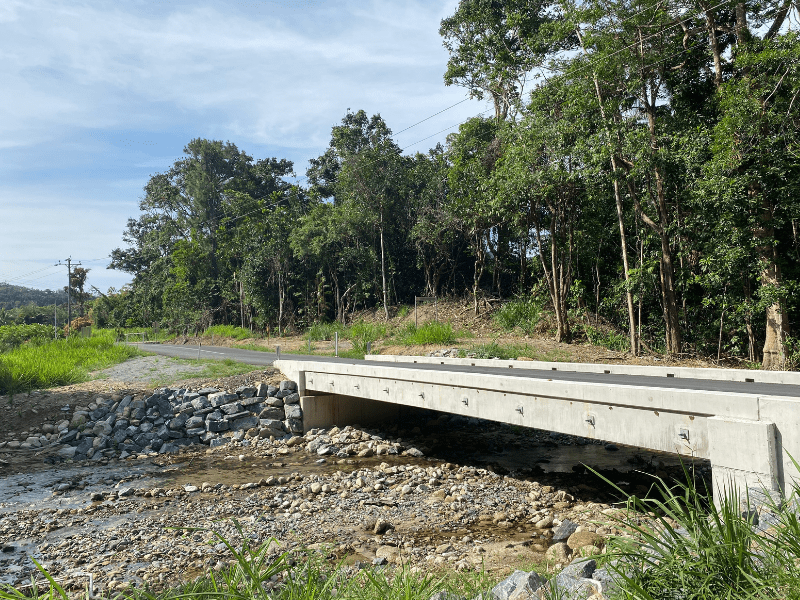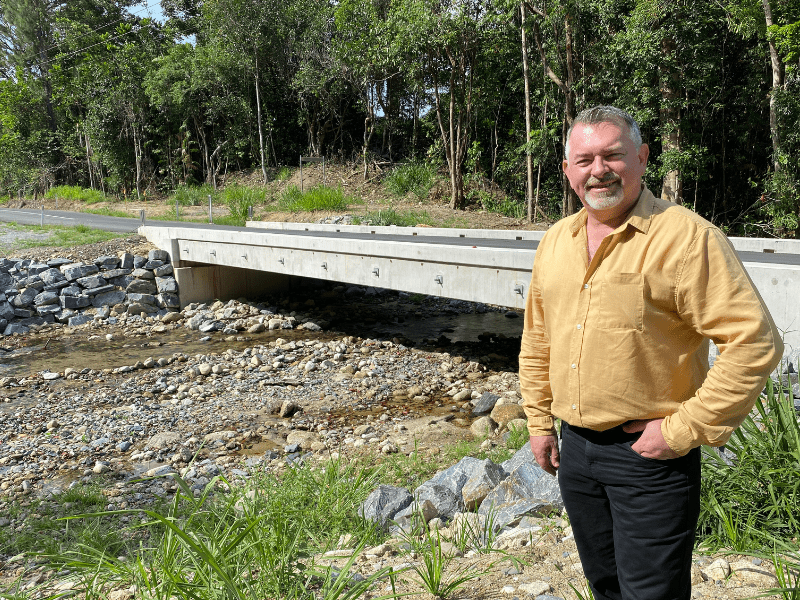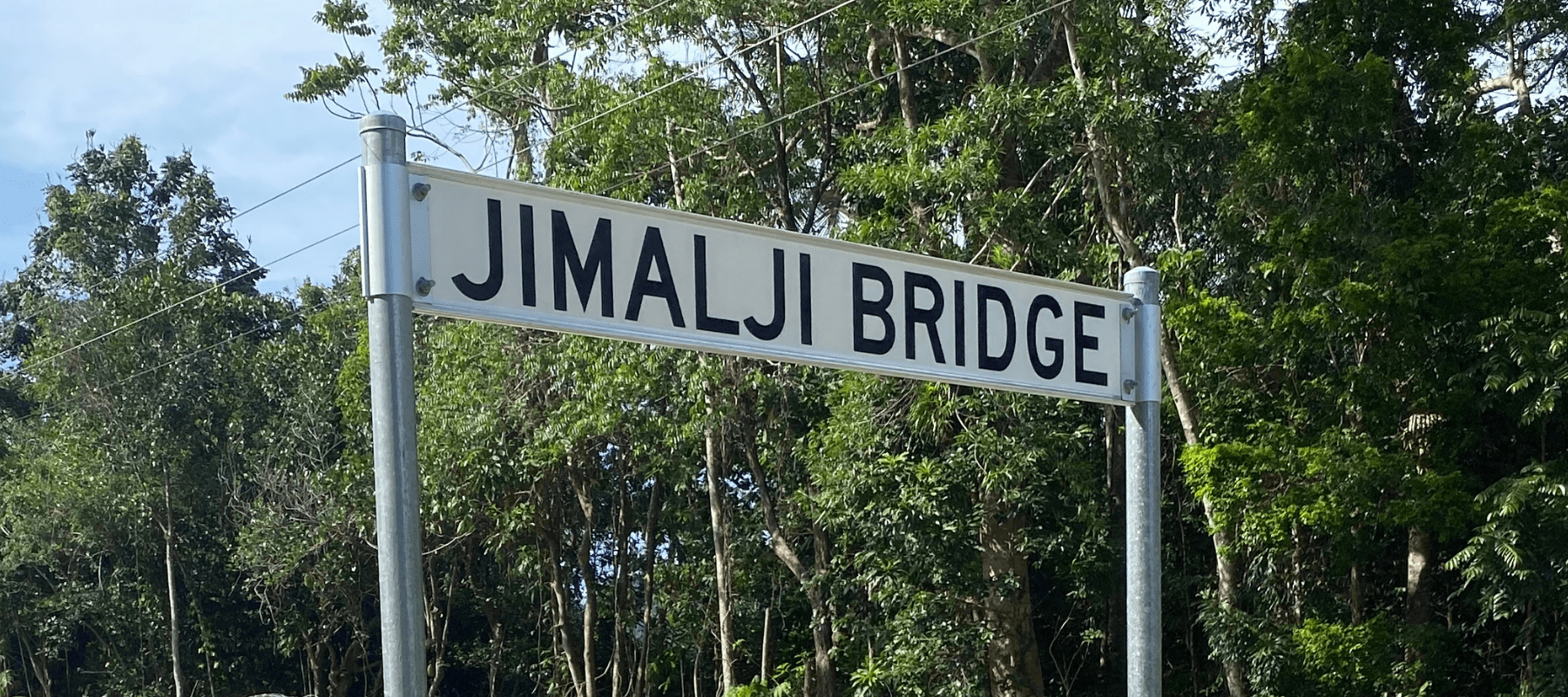A NEW bridge in the Whyanbeel Valley will give a nod to the Eastern Kuku Yalanji people after Douglas Shire Council voted to name the crossing after a famous mountain in the Daintree National Park called ‘Manjal Jimalji’.
The name relates to the creek which runs under the bridge originating from the Devil’s Thumb’ mountain, also known as Manjal Jimalji by Eastern Kuku Yalanji, which rises 1065 metres above sea level.
Council unanimously resolved to name the new bridge ‘Jimalji’ earlier this year.
The new crossing will give cattle graziers and nearby residents greater access during the wet season.
Council recently completed the upgrade works, which saw eight pre-stressed girders weighing 19 tonnes each installed on Whyanbeel Road across Little Falls Creek to form a bridge
The $1 million project was 100% funded by the Queensland Government’s Works for Queensland program.
Douglas Shire Mayor Michael Kerr said floodwater regularly inundated the old causeway several times each year.
“It is great to see this new bridge completed as it will add resilience to the roads in the area and improve access to the Whyanbeel Valley during the wet season,” he said.
“The creek crossing was a known hazard for nearby farmers and residents who were effectively cut off when a decent rain set in.
“I am also incredibly proud to choose an Eastern Kuku Yalanji name that helps reconnect future generations to the deeper context of this land and the ancient culture that sculpted it.”
The creek banks have also been re-vegetated with over 160 plants and other small grass species planted near the crossing.
Jimalji
Kuku Yalanji Name
“Devil’s Thumb, also known as Manjal Jimalji by Eastern Kuku Yalanji, is a mountain located near Mossman. It rises 1,065 metres above sea level.
The creek which runs under the new bridge in Whyanbeel, travels from Manjal Jimalji. ”
Resident’s comment:
“At the opening of meetings and gatherings Traditional Owners and local Elders are often acknowledged in word. I see this as an opportunity to do something tangible to correct a history that has seen them largely marginalised. With 50,000 plus years of history and connection to this land I think that this is the very least that we can do as a community.”





